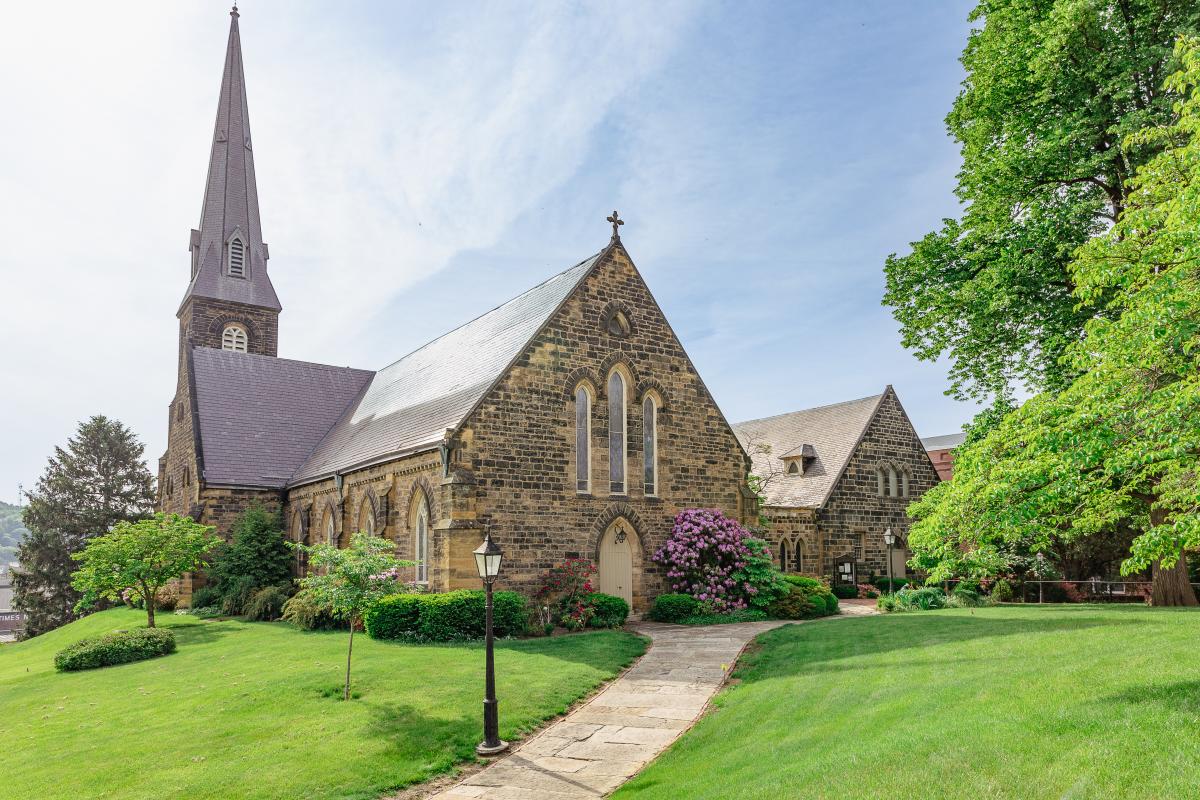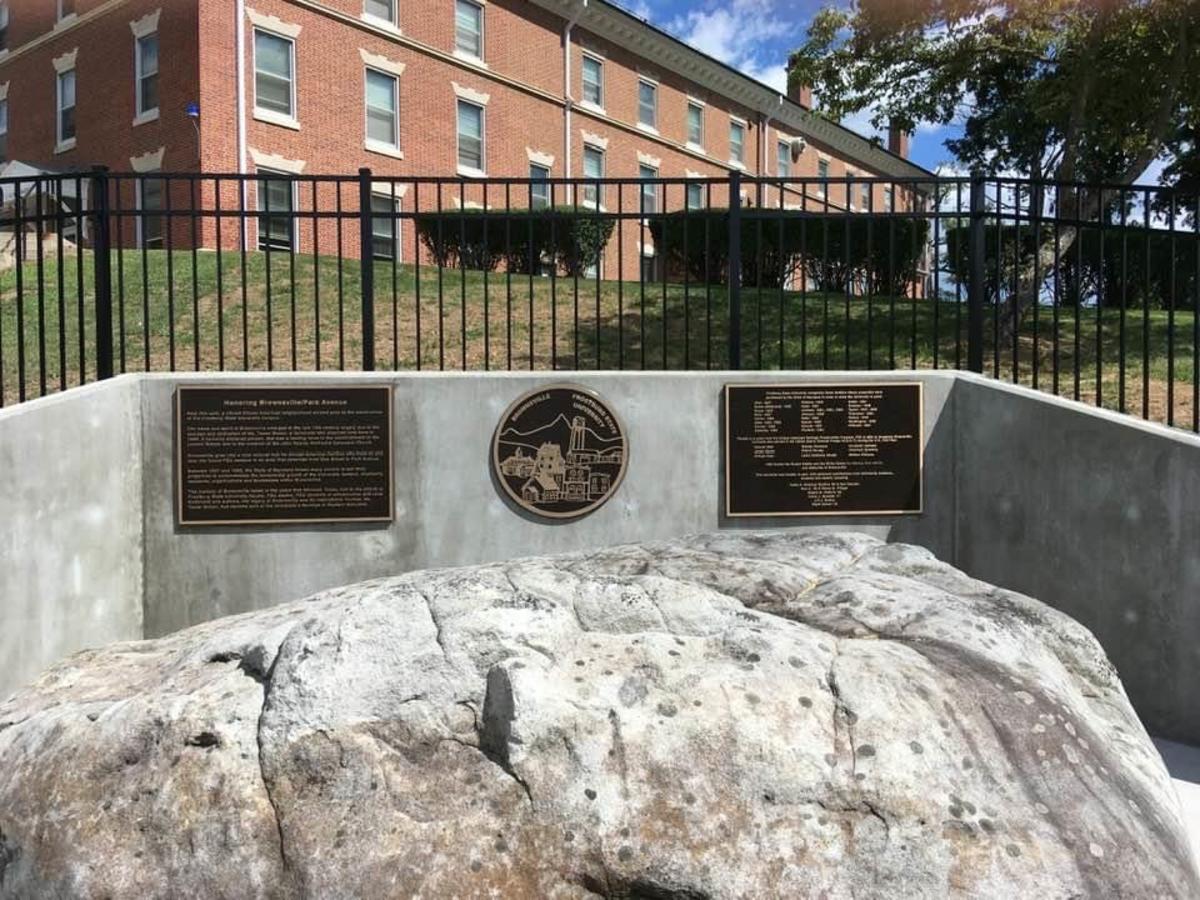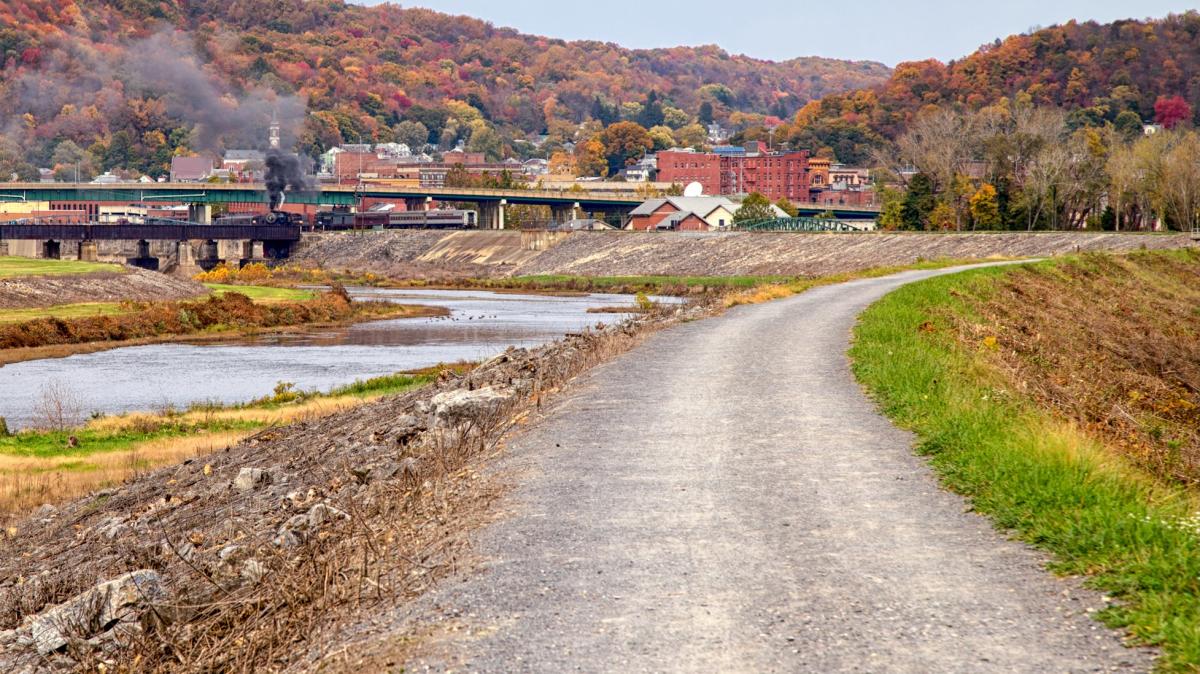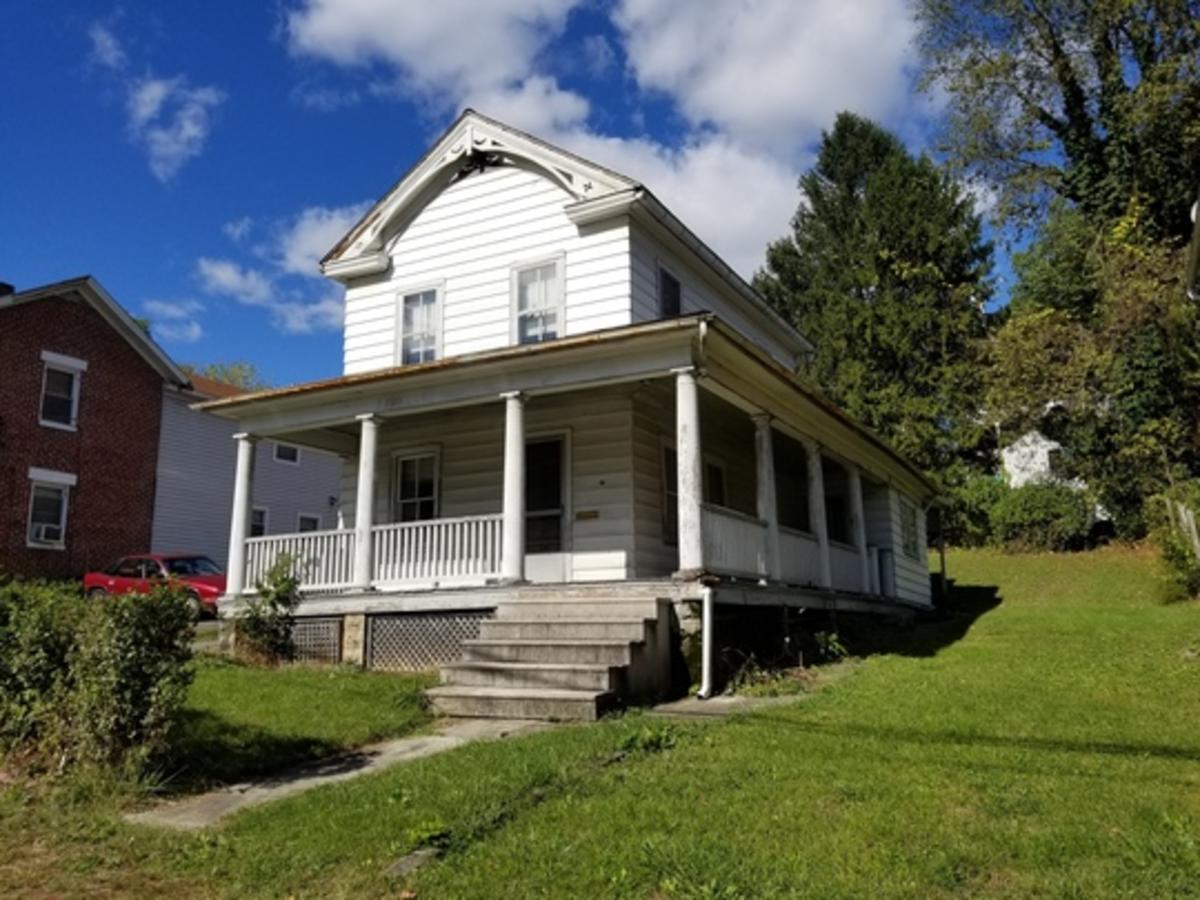In honor of Black History Month, we wanted to take this moment to explore some of our own African American heritage sites that tell important stories of Allegany County, Maryland. In our Passages of the Western Potomac Heritage Area, Allegany County’s state-designated heritage area, you can explore these stories and attractions.

EMMANUEL EPISCOPAL CHURCH
Cumberland, MD
The Emmanuel Church sits on land that was originally Fort Cumberland, which served as a frontier outpost during the French and Indian War. Earthwork tunnels remaining from the fort run under the church. The church was constructed around 1850 and designed by well-known Philadelphia architect John Notman.
The rector of Emmanuel Parish at the time was Rev. David Hillhouse Buel, who had been active at other Underground Railroad sites in Sykesville and Westminster, MD, before coming to Emmanuel in 1847. Rev. Buel worked alongside the Sexton (custodian) of the church. The sexton’s job included keeping the church and rectory looked after, keeping the furnace going and ringing the church bell, and also doing custodial work at the Allegany Academy.
These three buildings are on a line with each other that runs about 200 yards (Emmanuel Parish Church is at 16 Washington Street, the Allegany County Public Library (Allegany Academy) is at 31 Washington Street, and the old rectory is at 29 Prospect Square). They are connected by a tunnel that once was part of the defenses of Fort Cumberland. In the 1850s, a steam line ran through this tunnel from the furnace under the church to the Academy and beyond to the Rectory. It was a natural part of the sexton’s job to pass between these buildings' day and night.
Oral history tells us that enslaved people would arrive on the C&O Canal and hide out in Shanty Town, a section of Cumberland where free Black community members lived. The sexton would ring the bell in a special way to signal it was safe for the escaping enslaved people to travel to the church's tunnels, where they would rest a day beneath the church, receiving food and aid from Rev. Buel and other abolitionists and conspirators. When night fell, they would go down the tunnel that led them through the basement of the Academy and into the basement of the rectory. Then, they would go out the rectory cellar door, which in those days was in an unpopulated part of town, and meet up with the transportation that would take them across the Mason-Dixon Line, just 4 miles away, or up another route that would lead them to the Land of Freedom. In this story, the tunnels under Emmanuel Parish Church were the last Underground Railway stop to freedom for many.
Today, you can schedule tours and visit the tunnels beneath Emmanuel Episcopal Church as well as their newly renovated Welcome Center to learn more about Washington Street's connection to the Underground Railroad.

BROWNSVILLE
Frostburg, MD
Brownsville was a community nested in Frostburg, Maryland. It began with two Black women, Tamar Brown and Elizabeth Jackson. Both were formerly enslaved people who purchased land and raised homes on neighboring lots. With the support of other formerly enslaved people in Allegany County, they organized and nurtured an African American community that lasted from the 1860’s through the 1950’s. Frostburg State University now exists where Brownsville once stood. The first plot of land was purchased in 1866 by Tamar Brown and continued to develop into a self-sustaining community for freed black people and their descendants.
In the 1920s, the expanding campus of The Normal School (now Frostburg State University) started displacing Brownsville families. The neighborhood’s geography shifted over several decades, and ultimately moved into Park Avenue and Mechanic Street in the early 1950s. As the community was forced out of the area, so was its memory. Fortunately, some families from the original community are still here and we can remember the rich history of Brownsville when we look around Frostburg today.
Visit the Upper Quad on Frostburg State University's campus to view Brownsville's monument, which was unveiled in August of 2020 to commemorate the community lost due to the construction of what is now Frostburg State University.

CHESAPEAKE AND OHIO CANAL
Cumberland and Oldtown, MD
Freedom seekers escaped by following the towpath along the canal before passing into Pennsylvania, a free state. Others escaped to the canal to work and blend in as free African American workers along the canal. Shawnee Indians once lived in the hills surrounding Oldtown, MD, near the confluence of the North and South branches of the Potomac River. The village is believed to have been the home of King Opessa, a Shawnee leader who accepted and protected runaway enslaved people. The site represents the first confirmed archeological manifestation of the several historically documented Shawnee villages in Maryland. Today, the site is a forested area within the C&O Canal National Historical Park.

THE JANE GATES HOUSE
Cumberland, MD
Shortly after the Civil War, Jane Gates appears in the 1870 census as a nurse and laundress at 51 years of age, living with two of her children and two grandchildren.
Records from the Allegany County Courthouse note that in 1871, Jane Gates bought an eight-room house at 515 Greene Street in Cumberland, MD, in the amount of $1,400. What is remarkable about this is that Ms. Gates was a former enslaved person and was also the first black woman in Allegany County to have a bank account.
Today, this property is still in the Gates family, and Jane’s descendants and members of the community have rallied around the building with the mission to rehabilitate the house and develop programming that will teach the history and honor the spirit of Jane Gates.
SAVE THE DATE
The Annual Voices of Freedom Awards and Gala hosted by the Allegany County NAACP Branch 7007.